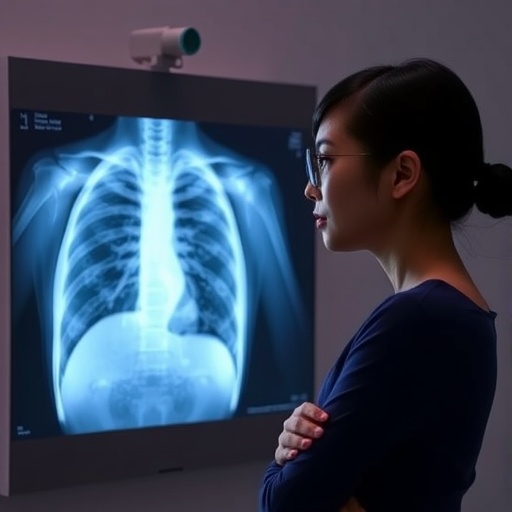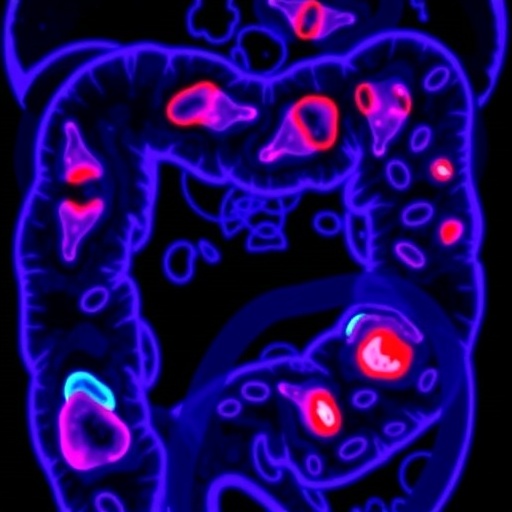In recent years, the landscape of lung cancer diagnosis and screening has witnessed a significant paradigm shift, particularly in recognizing at-risk populations beyond the traditional cohort of smokers. Emerging data increasingly point to an overlooked demographic—Asian women who have never smoked yet face disproportionately high rates of lung cancer. A groundbreaking study, the Female Asian Nonsmoker Screening Study (FANSS), recently presented at the International Association for the Study of Lung Cancer 2025 World Conference on Lung Cancer (WCLC), offers compelling evidence supporting the adoption of low-dose computed tomography (LDCT) screening in this unique population.
FANSS represents the first dedicated lung cancer screening program in the United States specifically targeting non-smoking Asian women, a group historically excluded from screening guidelines that prioritize smoking history. The study enrolled 1,000 eligible Asian American women aged 40 to 74, exposing them to LDCT to evaluate lung cancer detection rates through the Lung-RADS classification system, a standardized method utilized globally to stratify the risk of malignancy based on CT imaging findings. This approach marks a substantial advancement in addressing lung cancer epidemiology with nuanced, population-specific protocols.
The impetus for FANSS arises from epidemiological observations indicating that Asian American female never-smokers exhibit nearly twice the lung cancer incidence compared to their white counterparts in the same smoking category. This discrepancy has perplexed oncologists and public health researchers alike, prompting investigations into genetic predispositions, environmental exposures, and viral etiologies that might underlie this elevated vulnerability. FANSS aims not only to quantify detection efficacy but also to illuminate the biological and clinical nuances within this cohort.
Study outcomes reveal a lung cancer detection rate of 1.3% among participants, a figure notably higher than detection rates reported in the National Lung Screening Trial (NLST), which predominantly enrolled high-risk smokers. Such data underscore the potential limitations of current screening algorithms, which largely omit non-smoking yet high-risk individuals. Dr. Elaine Shum of the NYU Perlmutter Cancer Center, lead investigator of FANSS, emphasizes that these findings merit serious reconsideration of existing guidelines to encompass groups traditionally deemed low-risk based solely on smoking history.
Delving deeper into the radiological assessments, the Lung-RADS distribution among participants illustrates a spectrum of findings: 2.2% categorized as Lung-RADS 0 (incomplete study), 38.8% as Lung-RADS 1 (negative), 52.1% as Lung-RADS 2 (benign findings), 4.1% as Lung-RADS 3 (probably benign), and 2.8% as Lung-RADS 4 (suspicious). This distribution highlights the prevalence of indeterminate and suspicious nodules within this demographic, elucidating the critical importance of vigilant monitoring and timely intervention to optimize clinical outcomes.
Diagnosis of invasive lung adenocarcinoma was confirmed in thirteen participants, reflecting the heterogeneous presentation of lung cancer in non-smoking Asian women. Of particular clinical importance is the staging distribution at diagnosis: nine cases detected at Stage IA, two at Stage IIB, and two at Stage IIIB/C. Early-stage detection improves prognosis substantially, signaling the value of LDCT in facilitating curative surgical interventions. Indeed, all diagnosed patients underwent surgical resection with no lung cancer-related mortalities reported to date, suggesting that early diagnosis via screening translates directly into improved survival rates.
FANSS also identified an additional cohort of fourteen patients with Lung-RADS 3 or 4 designations currently under further diagnostic evaluation. These intermediate and high-risk findings demonstrate the necessity for layered diagnostic protocols incorporating follow-up imaging and, potentially, molecular biomarkers to discern malignant potential amid radiological ambiguities. This reflects an ongoing evolution in thoracic oncology that integrates imaging phenotypes with genetic and proteomic signatures to refine screening precision.
The scientific dialogue surrounding the inclusion of non-smoking populations in lung cancer screening is informed by prior studies such as the TALENT trial conducted in Taiwan, which similarly reported notable detection rates in nonsmoking Asian cohorts. These converging data sets question the sufficiency of the U.S. Preventive Services Task Force’s current criteria, which remain tethered to a smoking history threshold, potentially neglecting a vulnerable segment of the population with unique risk factors. FANSS, thus, propels this conversation forward, advocating for expanded, evidence-based eligibility that reflects demographic realities.
Underlying these clinical implications are hypotheses about etiological mechanisms unique to lung cancer in non-smoking Asian women. Proposed factors include genetic polymorphisms affecting carcinogen metabolism, familial susceptibilities, chronic exposure to indoor air pollutants such as cooking fumes, and the role of infectious agents like human papillomavirus (HPV). As FANSS continues longitudinal follow-up and integrates biomarker analyses, the field anticipates breakthroughs that may unlock precision screening modalities and novel preventive strategies tailored to this subgroup.
Importantly, the global lung cancer research community receives these findings within the context of the IASLC’s mission: to enhance multidisciplinary cooperation and innovation in combating lung and thoracic cancers worldwide. The WCLC conference serves as a premier platform for disseminating such transformative research, fostering dialogue that bridges epidemiology, radiology, molecular biology, and clinical oncology. FANSS exemplifies this collaborative spirit, merging epidemiological insight with cutting-edge imaging technologies to reshape disease detection paradigms.
In summary, the Female Asian Nonsmoker Screening Study underscores an urgent need to recalibrate lung cancer screening protocols to recognize and address high-risk nonsmoking populations, particularly Asian women. Through rigorous LDCT screening and detailed radiological classification, FANSS demonstrates that early-stage lung cancer detection is feasible and significantly beneficial, challenging entrenched notions of risk and screening eligibility. As further data emerge and biomarker correlations deepen understanding, the potential to develop refined, inclusive screening guidelines comes into view, promising improved outcomes for previously underserved groups.
The findings from FANSS herald a pivotal moment in thoracic oncology, suggesting that lung cancer prevention and detection efforts can no longer rely solely on smoking history as the determinant of risk. Instead, a multifactorial model incorporating demographic, environmental, genetic, and radiological factors must guide screening strategies. This evolution holds promise for reducing lung cancer mortality among populations that have historically been marginalized in clinical research and public health initiatives.
Looking forward, the integration of FANSS data with global research efforts, including biomarker validation and algorithmic risk assessment models, paves the way for personalized lung cancer screening frameworks. These frameworks can dynamically adapt to individual risk profiles, encompassing a broader spectrum of at-risk populations and optimizing resource allocation in healthcare systems. The convergence of technology, epidemiology, and clinical practice embodied by FANSS symbolizes the vanguard of precision oncology in lung cancer prevention.
Subject of Research: Lung cancer screening efficacy in Asian female never-smokers using low-dose CT.
Article Title: [Not provided in the source content.]
News Publication Date: September 9, 2025.
Web References:
International Association for the Study of Lung Cancer (IASLC): www.iaslc.org
Previously reported research on lung cancer among Asian female nonsmokers: https://cancer.ucsf.edu/news/2022/01/12/addressing-high-lung-cancer-rates-among-female-asian-non-smokers?utm_source=chatgpt.com
National Lung Screening Trial (NLST): https://www.nejm.org/doi/full/10.1056/NEJMoa1102873
References: Not explicitly detailed in the source content.
Image Credits: Not provided.
Keywords: Lung cancer, low-dose CT screening, non-smoking Asian women, Lung-RADS, lung adenocarcinoma, early detection, thoracic oncology, FANSS study, lung cancer epidemiology, screening guidelines.
Tags: addressing health disparities in cancerAsian American women’s healthepidemiology of lung cancerFemale Asian Nonsmoker Screening StudyInternational Association for the Study of Lung Cancerlow-dose computed tomography benefitslung cancer incidence in never-smokerslung cancer screening for Asian womenLung-RADS classification systemnon-smoking lung cancer risk factorsscreening programs for at-risk populationstargeted lung cancer screening guidelines





